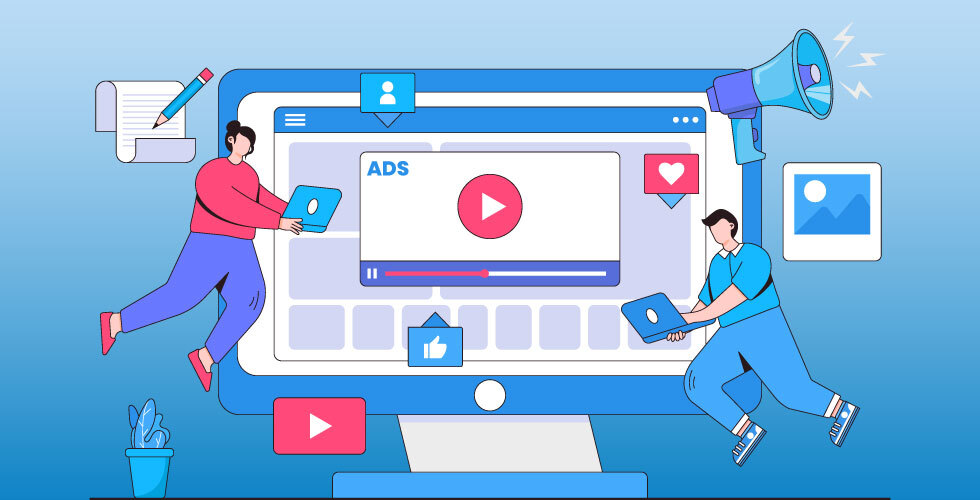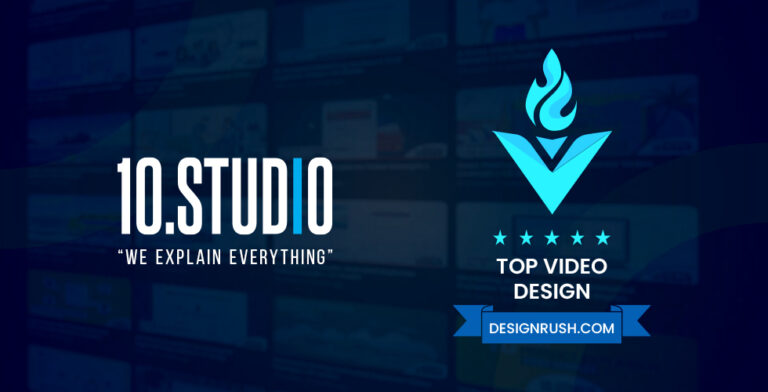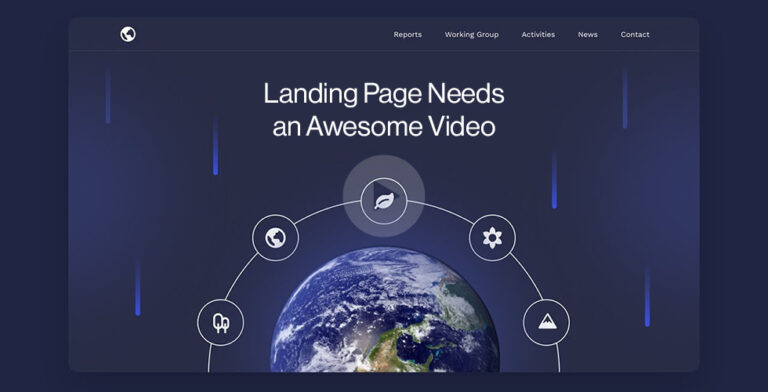In a world filled with information overload and fleeting attention spans, capturing the hearts and minds of consumers has become an art form. Enter animation advertising – a mesmerizing fusion of creativity, storytelling, and cutting-edge technology that has revolutionized the way brands communicate. According to Jo Ginger’s article from LinkedIn, around 65% of consumers like to be converted after seeing an animation advertising video. Because with animation, the possibilities are boundless. It transports us to magical realms, introduces us to lovable characters, and takes us on unforgettable journeys.
From the whimsical charm of hand-drawn 2D animation to the breathtaking realism of 3D computer-generated imagery (CGI), animation advertising has the power to ignite emotions, spark imagination, and leave an indelible mark on our consciousness.
In this dynamic realm, brands become storytellers, and the lines between reality and fantasy blur, creating a captivating symphony that resonates with audiences in ways traditional advertising simply cannot match. So, fasten your seatbelts and prepare to be enchanted as we explore the vibrant world of animation advertising and uncover its secrets to capturing hearts, sparking curiosity, and shaping the future of marketing.
How Animation Incorporates With Advertising?
Animation is the art of creating moving images through a series of sequential drawings, models, or computer-generated graphics. It brings static elements to life, creating the illusion of motion and allowing for storytelling, visual appeal, and engaging experiences. In the advertising sector, animation is a powerful tool that enables brands to captivate their audience, convey complex ideas, and leave a lasting impression.
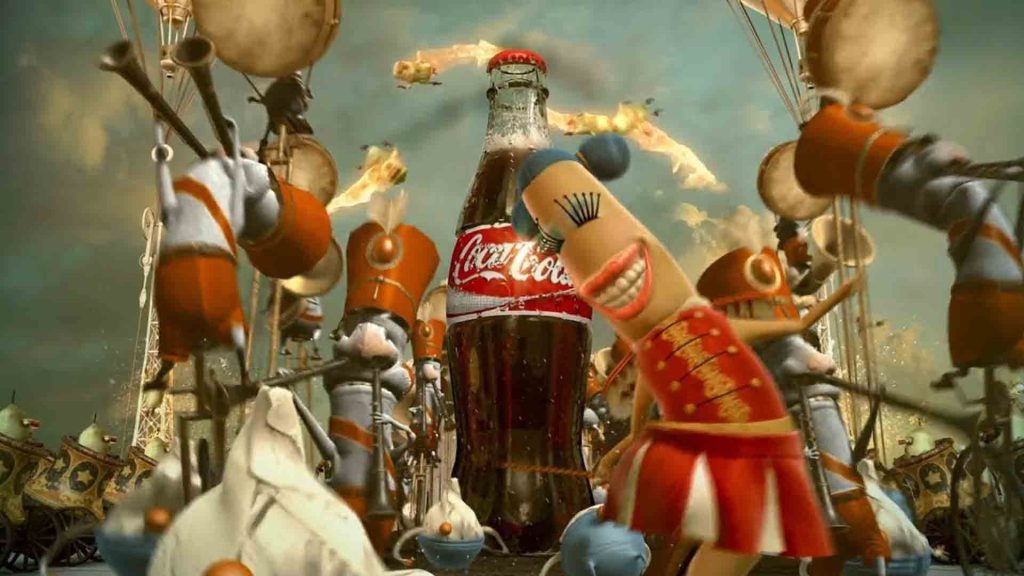
Here’s how animation can be effectively used in advertising:
- Grab Attention: Animation has a natural ability to catch the viewer’s eye. By utilizing vibrant colors, dynamic movements, and captivating visuals, animated advertisements can immediately grab attention in a crowded advertising landscape. The unique and imaginative nature of animation allows brands to stand out and make a memorable impact.
- Simplify Complex Concepts: Some products or services may involve intricate processes or abstract ideas that are difficult to explain using traditional methods. Animation can simplify complex concepts by breaking them down into digestible visual sequences. Through animated storytelling, brands can educate their audience in an engaging and entertaining manner, making information more accessible and understandable.
- Enhance Brand Identity: Animation provides a versatile canvas for creating distinctive and memorable brand identities. By developing animated characters, mascots, or logos, brands can establish a recognizable and relatable visual representation of their identity. Animated brand elements can evoke emotions, foster connections, and enhance brand recall among consumers.
- Evoke Emotion: Animation has the power to stir emotions and create emotional connections with the audience. Through well-crafted narratives, expressive characters, and compelling visuals, animated advertisements can evoke joy, nostalgia, empathy, or excitement. Emotional engagement enhances the likelihood of viewers connecting with the brand and its message on a deeper level.
- Showcasing Products and Features: Animation allows brands to showcase their products or services in a visually appealing and imaginative way. It provides the flexibility to highlight features, demonstrate functionality, and present products from multiple angles. Animation can bring products to life, illustrating their benefits, and leaving a lasting impression in the minds of consumers.
- Flexibility and Creativity: Animation offers creative freedom and flexibility in visual storytelling. It transcends the limitations of reality, allowing brands to create imaginative worlds, transform objects, and depict scenarios that may be impossible or impractical to film. This creative freedom enables brands to present their offerings in unique and attention-grabbing ways.
- Targeted Personalization: Animation can be customized to cater to specific target audiences. By tailoring the style, characters, and narratives to resonate with different demographics, brands can create personalized and relevant experiences. Animation also allows for easy adaptation across various platforms and mediums, ensuring consistent messaging and branding.
History Of Animation Advertising
Animation has a rich history that spans thousands of years, which originated all the way back to the Paleolithic era when early humans created cave drawings depicting animals in various dynamic poses. These ancient drawings were a primitive form of animation, showcasing the legs of animals in positions of motion.
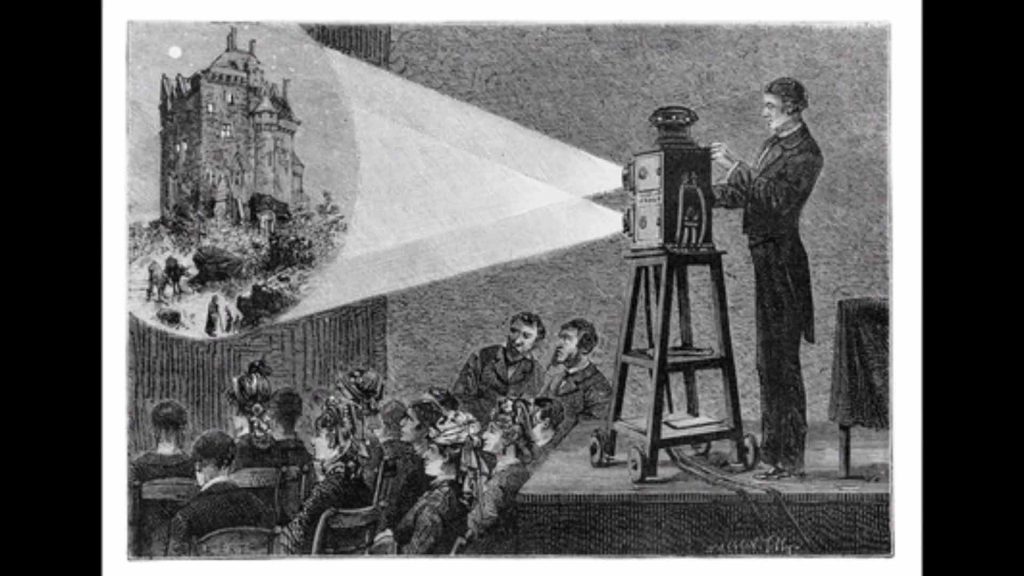
As time progressed, technology started playing a significant role in the development of animation. In the year 1603, an important milestone was achieved with the creation of the magic lantern. This ingenious device allowed for the projection of images that were painted on glass sheets, introducing a new dimension to visual storytelling.
The 20th century marked a key period in the growth of animation, often directed to the Prosperous Age of American Animation. In 1928, a classical character named Mickey Mouse burst onto the scene, making history as one of the first animated creations to incorporate synchronized sound directly into the film. This groundbreaking achievement paved the way for numerous other beloved cartoons such as Popeye and Bugs Bunny, captivating audiences with their charm and humor.
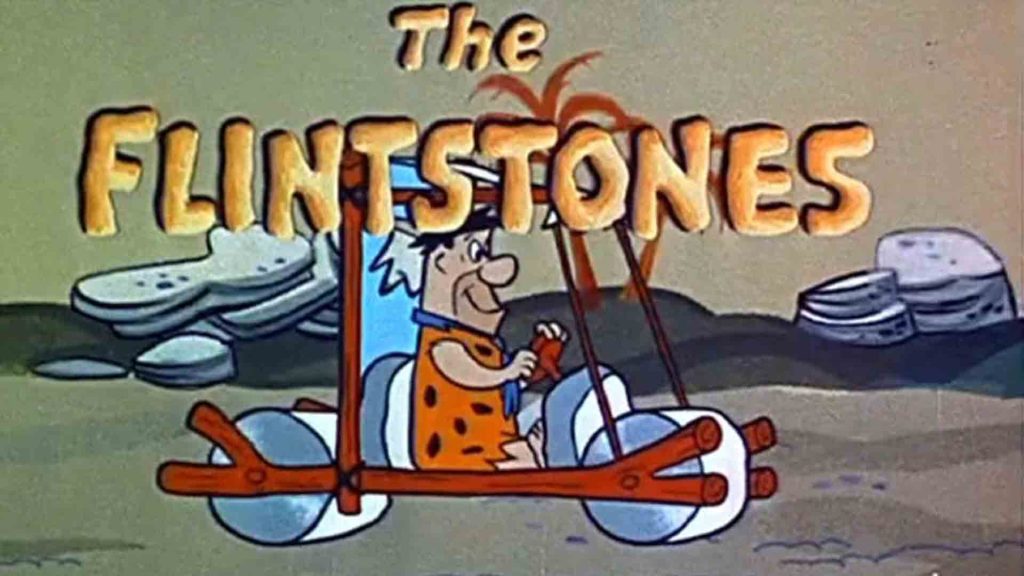
In the 1960s, animation reached another milestone with the birth of The Flintstones, the first animated series to be regularly aired during prime-time television. This marked a considerable shift, as animated shows were no longer restricted to children’s programming and began to capture wider audience attention.
However, in the 1980s and after that, computer-generated imagery (CGI) revolutionized modern-day animation. With the introduction of CGI technology, a new era began, allowing for stunning visual effects and realistic animations. This era gave rise to a multitude of famous cartoons, and among them, a notable mention goes to The Simpsons, which became a cultural phenomenon and continues to entertain audiences to this day.
Through the ages, animation has continually evolved, blending artistic creativity with technological advancements. From the early cave drawings to the magic lantern, from the Golden Age of American Animation to the CGI revolution, animation has captivated our imaginations and continues to be an integral part of our cultural heritage.
Types of Animation
It is important to consider the animation format, as well as its purpose and concept very carefully before working on an animation project for a business advertisement. Now we will delve into the intricacies of the five major animation types, discuss their unique characteristics and elucidate why each may serve as the optimal choice for your upcoming project. By understanding the nuances of these animation types, you will be equipped to make informed decisions that align seamlessly with your marketing objectives and effectively engage your target audience.
2D Animation
2D animation is a traditional method of creating animations using two-dimensional images or drawings. It involves sequencing individual frames to produce the illusion of motion. This type of animation has been widely used for a long time and, till today, it’s quite popular in several industries. Understanding the techniques used in 2D animation and the industries that rely on it can provide valuable insights into its applications and benefits.
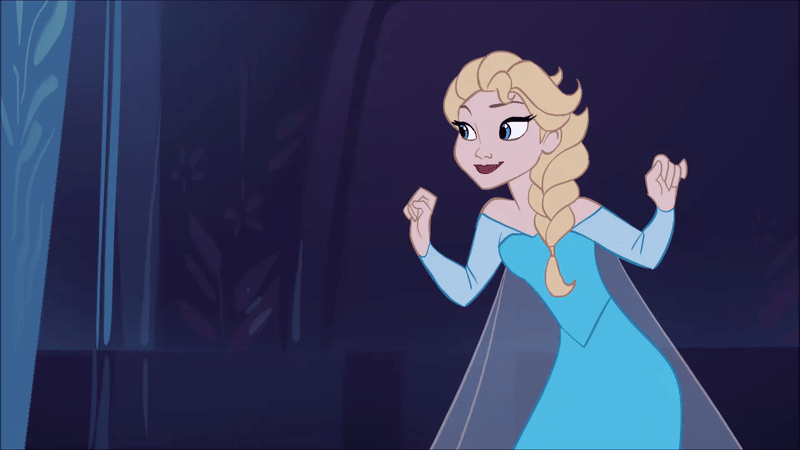
2D animation can be done by applying various techniques, some of which are explained below.
- Traditional Hand-Drawn Animation: It is a labor-intensive technique where artists meticulously sketch each frame by hand. They create the characters, backgrounds, and other elements, which are then compiled to create the final animation. This technique requires immense skill and artistry.
- Digital Vector-Based Animation: Digital vector-based animation involves using software tools to create 2D vector images. These images can be easily manipulated, scaled, and animated. This technique offers flexibility and efficiency in the animation process, allowing for smoother and more precise movements.
- Rotoscoping: Rotoscoping is a technique where artists trace over live-action footage frame by frame. It allows for realistic and fluid animation, as it captures the natural movements and gestures of real actors. Rotoscoping is often used to achieve lifelike movements and interactions in 2D animation.
- Cut-Out Animation: Cut-out animation involves using separate pieces of artwork, typically on a flat surface, and animating them by moving or manipulating them individually. This technique is popular for creating animations on a tight schedule, as it allows for the efficient reuse of assets and simplifies the animation process.
3D Animation
3D animation stands out as a captivating and immersive technique for bringing lifelike characters, objects, and environments to the screen. Unlike its 2D animations, 3D animation uses CGI to create high-quality 3D visual experiences that mimic reality. This cutting-edge technology has revolutionized the animation industry and found applications in various fields beyond entertainment, including advertising, gaming, architecture, and product visualization.
There are several ways to make a 3D Animation, they are –
- Character Animation: Character animation in 3D involves bringing digital characters to life by animating their movements, expressions, and interactions. This type of animation is commonly used to create intriguing and believable characters in films, video games, and advertisements. Character animators meticulously craft performances, breathing personality into virtual beings, and conveying emotions through subtle gestures, facial expressions, and body language.
- Motion Graphics: Motion graphics utilize 3D animation techniques to create visually appealing and dynamic graphic designs that communicate information or enhance storytelling. It involves the integration of text, shapes, colors, and visual effects in a moving and animated form. Motion graphics are commonly used in title sequences, explainer videos, user interfaces, and broadcast design to grab attention, convey messages effectively, and create a visually engaging experience.
- Visual Effects (VFX): Visual effects involve the integration of computer-generated elements into live-action footage, seamlessly blending real and digital worlds. 3D animation plays a crucial role in creating VFX, enabling the generation of realistic simulations, fantastical creatures, explosive environments, and other extraordinary visuals that enhance the overall visual experience. VFX artists employ 3D animation techniques to generate stunning and immersive visual effects in films, television shows, and commercials.
- Architectural Visualization: 3D animation is used in architectural visualization to create realistic and immersive representations of buildings, interiors, landscapes, and urban environments. Architects and designers use 3D animation to showcase their designs, present ideas to clients, and provide virtual tours of planned spaces. This type of animation allows viewers to experience architectural projects in a dynamic and interactive way, helping them understand spatial relationships, materials, and aesthetics.
- Product Visualization: Product visualization employs 3D animation to showcase products in a visually compelling and realistic manner. It allows businesses to present their products from various angles, demonstrate functionalities, and highlight key features. 3D animations of products can be used in advertisements, online product demos, e-commerce websites, and presentations to engage customers and provide a detailed and immersive view of the product.
Stop Motion Animation
In stop-motion animation, each frame is painstakingly captured by taking a photograph or adjusting the objects between small movements. These individual frames are then played in rapid succession, creating the illusion of movement when viewed sequentially. This process requires patience, precision, and attention to detail because even the slightest adjustments can have a significant impact on the final result.
Stop-motion animation offers a tangible and tactile quality that sets it apart from other animation techniques. The imperfections and subtle nuances of real-world objects add a unique charm and authenticity to the animations. The handcrafted nature of stop-motion animation evokes a sense of nostalgia and artistry, captivating viewers through its tactile appeal and meticulous craftsmanship.
Here are the types of stop-motion animation –
- Claymation: Claymation or clay animation, is another popular form of stop-motion animation. It involves shaping and manipulating clay characters or objects, capturing incremental movements in each frame to create smooth and fluid animations. Claymation allows for a wide range of artistic expression and is often associated with whimsical and playful storytelling.
- Puppet Animation: Puppet animation involves using articulated puppets or figurines, typically made from materials like wood, foam, or wire, to create characters. These puppets are carefully posed and adjusted between frames to simulate lifelike movements. Puppet animation allows for greater control and precision in character animation, making it ideal for more intricate and detailed storytelling.
- Object Animation: Object animation involves animating inanimate objects, such as toys, household items, or everyday objects, to create stories and visual narratives. It utilizes creative techniques to imbue these objects with personality and make them appear alive. Object animation offers a wide range of possibilities, from creating fantastical worlds to delivering powerful messages through the manipulation of ordinary objects.
- Cutout Animation: Cutout animation involves using two-dimensional characters or objects made from paper or other materials. These cutout elements are carefully positioned and moved incrementally to create the illusion of movement. Cutout animation offers a distinct visual style and is often used in educational videos, children’s programming, and artistic projects.
Benefits of Animation Advertising
Animation serves as a valuable advertising tool, effectively communicating your business identity and offerings to your target audience. Utilizing animated designs and video advertisements offers several advantages. With a variety of animation types available, you can easily find the perfect fit for your marketing campaign.
Micro Animation, a small interactive element on your website, enhances user navigation, particularly on mobile sites. It contributes to a seamless user journey.
3D Animation brings depth to images, making it ideal for illustrating complex processes in fields like engineering, construction, and infrastructure. It simplifies intricate concepts, making them more accessible to users.
GIFs, easily created using tools like Giphy and Photoshop, offer a cost-effective animation option for websites and social media. Their simplicity and testability make them a low-risk choice for engaging your audience.
The benefits of incorporating animation in marketing are numerous, and its popularity is steadily increasing. Anticipating its significant role in the future of digital marketing, here are four advantages to consider when incorporating animation into your advertising campaigns.
Deliver Complex Ideas Easily
Animation videos are highly effective in conveying complex ideas with ease. Through animation, intricate concepts can be simplified and presented in a visually engaging and understandable manner. By utilizing vibrant visuals, dynamic movements, and creative storytelling techniques, animation breaks down complex information into digestible chunks, making it easier for viewers to grasp and comprehend. The ability to manipulate characters, environments, and objects in animation allows for the depiction of abstract concepts and processes that may be difficult to visualize otherwise. Animations can also utilize visual metaphors, analogies, and storytelling techniques to provide relatable and memorable explanations. This combination of visual appeal, storytelling, and simplified representations enables animation videos to effectively convey complex ideas to audiences in a way that is engaging, accessible, and easily comprehensible.
Reaches Larger Audience
Animation videos play a crucial role in reaching a larger audience due to their inherent qualities and versatility. Firstly, animation transcends language barriers, making it accessible to a global audience. Since animated characters and visuals communicate through visuals rather than spoken language, they can effectively convey messages and stories to viewers across different cultures and languages. This broadens the potential reach of the content and enables businesses to connect with diverse audiences.
Furthermore, animation allows for the portrayal of abstract concepts, complex ideas, and imaginative scenarios that may be difficult to capture through live-action videos. By using animated visuals, businesses can simplify intricate information and make it more engaging and easily understandable for viewers. By converting complicated concepts into aesthetically pleasing and easily digestible content, animated videos ensure that the message reaches a wider audience, including those who may not have a solid understanding of the subject.
Animation also enables the creation of unique and memorable characters and settings. These animated elements have the power to captivate viewers and leave a lasting impression, making the content more shareable and increasing the potential for organic reach. Additionally, animation offers creative freedom, allowing businesses to experiment with different visual styles, colors, and storytelling techniques that can attract attention and stand out from the crowd.
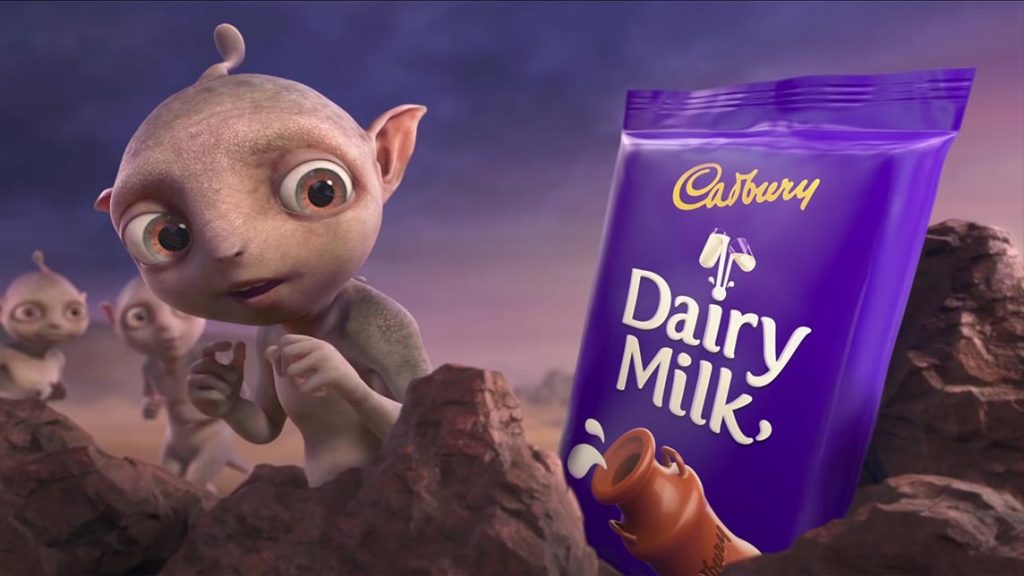
Additionally, you can share and distribute animation videos on digital platforms, such as websites, social media, and video-sharing websites. Because people can feel more connected to video content other than images or written blogs, the animation is more likely to be seen by people and has a higher chance of going viral. Needless to say, it would greatly increase its visibility and exposure to a wider audience.
Cost-Effective Marketing Solution
Animation videos provide a cost-effective marketing solution for businesses. Firstly, animation video production cost is often lower compared to live-action videos, because it doesn’t require any expensive on-location shoots, sets, or actors. Animation also allows for greater flexibility and efficiency in conveying complex messages and ideas, resulting in reduced editing and reshooting costs.
Additionally, animation videos have a longer lifespan, as they can be easily updated and repurposed for various platforms and campaigns without the need for significant investments. According to a study by Rypple, animated explainer videos can increase conversion rates by up to 20%, showcasing the effectiveness of animation in driving desired outcomes while offering a cost-efficient marketing solution.
Evergreen Video
Animation advertising videos are often considered timeless and evergreen content due to several reasons. Firstly, animation has a distinct visual style that can transcend time and trends. Unlike live-action videos that may be influenced by fashion, technology, or cultural changes, animation has the ability to create universes and characters that are not bound by specific time periods. This makes animation videos relevant and engaging to audiences even years after their creation.
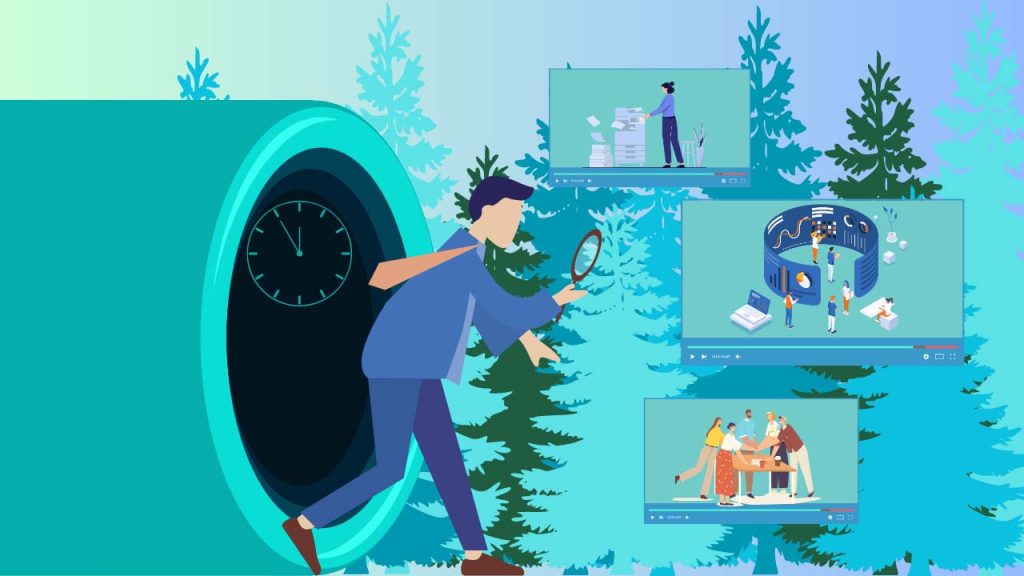
Additionally, animation allows for the depiction of abstract concepts, ideas, or fantastical elements that may not be easily captured with live-action footage. By using animated characters, settings, and visual effects, animation videos can convey messages and stories in a visually compelling and imaginative way.
Moreover, animation offers flexibility in terms of updates and modifications. Unlike live-action videos that may require reshooting or costly revisions, animation can be easily edited, modified, or expanded upon without significant expenses. This allows animation videos to stay current and adaptable to changing marketing strategies or target audience preferences.
How To Create An Advertising Campaign With Animation
It must be said that advertising is an art and it has no limits. And, when it comes to advertisements with video, there are a lot of scopes to use animation to reflect your ideas. It shows the benefits of the product and turns your advertisement parallel with your brand identity. Moreover, with a proper animation advertisement, it can be converted into a sales funnel and by using the video repeatedly, you can excel your revenue. However, to make a perfect animation advertisement campaign, there are several steps that you should follow –
Concept Development
Developing a concept is the first step while creating an animation advertising campaign. In order to do that, you must identify your campaign objective, find the target audience and the perfect way to deliver the key message. For this, you need to craft a compelling storyline and make a script that perfectly goes with your brand tone and connects to your audience. To develop a perfect concept, you need to do a lot of brainstorming, performing solid market research and once you are done with it, make your things align with your advertising goals.
Storyboarding and Pre-Production
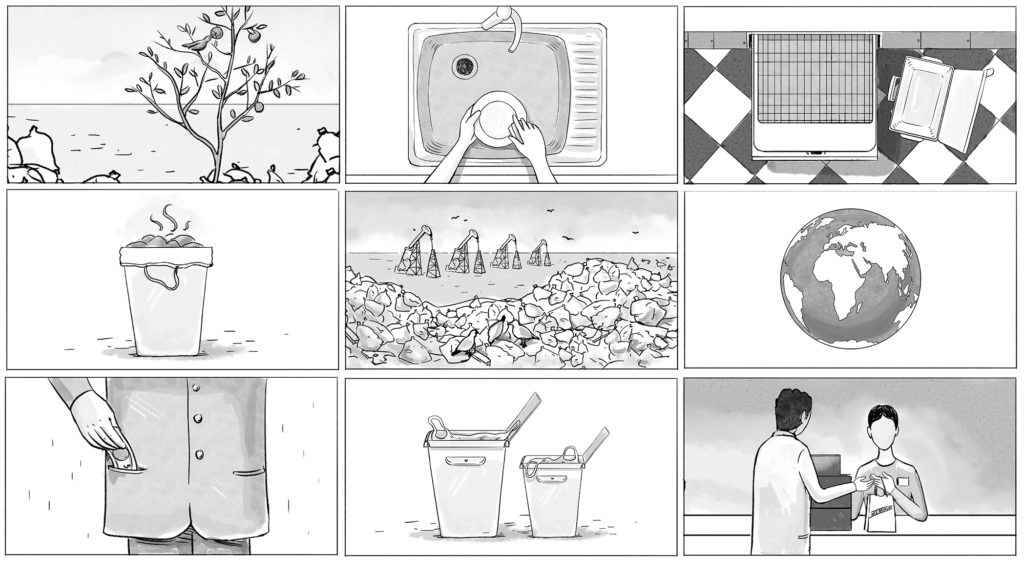
When you have finalized a concept, get on with storyboarding and pre-production. Storyboarding means a visual representation of your animation project that helps to maintain the flow of your work. It also helps to understand the needs and requirements before moving to your project. For example, the pre-production part involves voiceovers, music, and various sound effects for your project, which is going to make your project only better.
Animation Production
The production stage entails animating the storyboard. This involves producing character designs, backgrounds, and assets. To animate the elements of your campaign, use animation techniques and software. Whether it’s 2D animation, 3D animation, or stop motion, make sure the animation fits your concept and effectively conveys your message. To create a visually appealing animation, pay close attention to timing, movement, and visual appeal.
Post-Production and Delivery
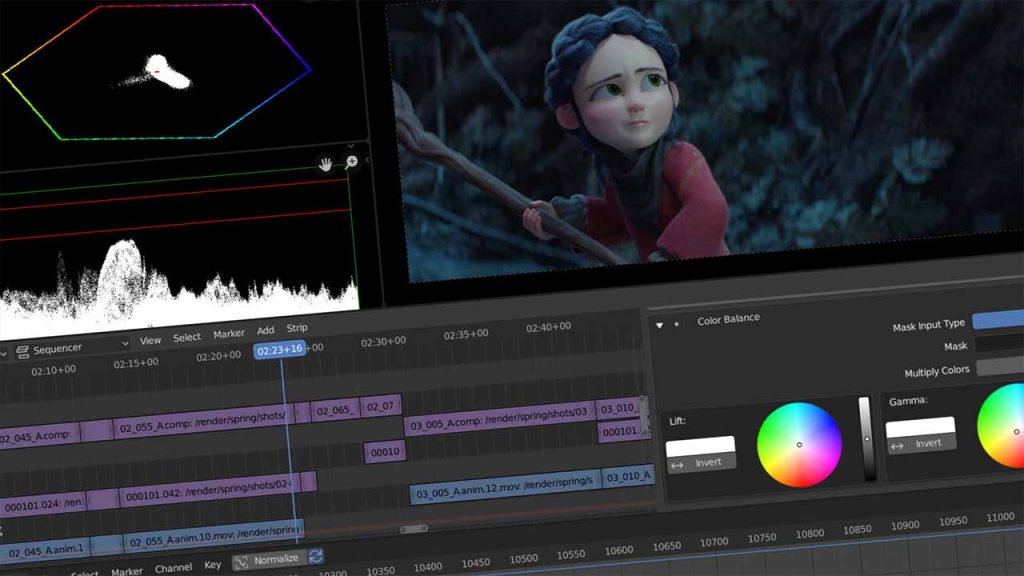
Once your animation project is complete, it’s time to move on to post-production. This stage involves adding final touches, effects, and transitions to enhance the overall quality of the animation. Review the animation for any necessary edits or revisions. Once you are satisfied with the final product, export and deliver the animation in the appropriate formats for distribution. Consider the platforms where your audience is most likely to engage with the animation, such as websites, social media, or television.
How To Use Animation For Better ROI
To improve brand reputation, generate new leads, and boost sales, businesses are constantly searching for new marketing strategies. One of the solutions that an experienced marketer might suggest to you is the use of animation in a marketing strategy. A study by Invodo research by Adobe shows that more than 50 professional marketers believe that visually pleasing content can bring a better return of investment(ROI). However, there are other factors to consider while measuring the success of an animated advertisement campaign.
Since the digital world is emerging and generating leads is becoming difficult day by day and animation videos offer a lot of benefits, traditional marketers are looking forward to running animated campaigns. Here are some tips on how to use animation videos for your next advertisement project.
Align Simplicity With Creativity
It’s important to balance creativity and simplicity when making animation. The effectiveness and impact of the animation can be significantly increased by finding a balance between these two factors. Simplifying the message will demonstrate to the target audience that it is understandable, relatable, and clear. It enables viewers to concentrate on the main message or narrative being told without becoming daunted by needless complexity.
On the other hand, creativity gives animation life and a singularity that makes it captivating and memorable. Viewers can be deeply affected by creative elements like original character designs, inventive storytelling techniques, and imaginative visuals. Animators can produce animations that are not only aesthetically pleasing but also successfully convey the intended message, leaving a powerful impression, by combining simplicity and creativity.
Portray Positivity
Animated videos are an essential part of online marketing, as they show positivity and expertise in the field. It is important to share the most positive message in your animation videos and what you have done so far. For example, take a custom clothing marketplace with funny t-shirts as their top products. Ending the videos with a positive tone and a call to action will act here as a key to showing experience and positivity, and also to boost sales.
Know Your Targeted Audience
Even though this is one of the most important marketing principles, it is important to not undervalue its significance. In fact, even the best video advertising won’t help you if you don’t target the right demographic or adjust your strategy properly.
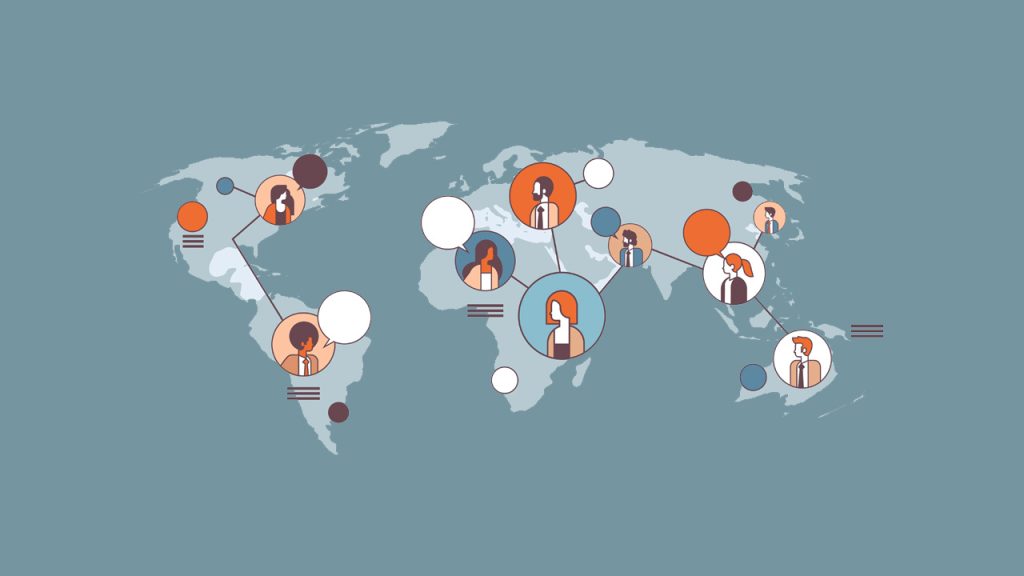
Firstly, you need to have enough knowledge about your audience. The music they enjoy is a great way to tailor your advertisement to your target audience, as is knowing their approximate age range. For instance, if you’re aiming your message at business owners and entrepreneurs, you should play soothing but creative music and official statistics with specifics.
On the other hand, you’ll need a lot of animation, movement, and humorous music if you’re planning to advertise children’s toys. A key component of your overall marketing strategy that will undoubtedly help increase sales and give your company more online presence is understanding and adapting to your target audience. Don’t forget to adjust to the social media platforms that your audience prefers to use. Wyzowl reports that 83% of marketers who used YouTube successfully increased their prospects and sales.
Use Proper Sound Effects
Animation advertising aims to hold viewers’ interest, improve viewing recall, and persuade them to use your company’s name and goods. As important as the design itself are the sound effects you add and the music you choose for your videos.
Alignment and correspondence between the audio and visual components are required. An effective commercial aims to entertain viewers and keep them watching unconsciously all the way through. Because of this, adding sound effects to your video—such as voice-over, excerpts from songs, or more creative sound effects—will make it more engaging to watch.
Challenges in Animation Advertising
While animation advertising offers numerous benefits, it also has its fair share of challenges. The technical aspect is one of the major factors here. Needless to say, a well-made animation video requires specialized skills, software, and equipment, which can be expensive. Moreover, it’s a time-consuming skill if you want to master it.
Additionally, rendering and processing large animation files can be resource-intensive and time-consuming, leading to potential delays in project timelines. Integrating animation with live-action footage can also present challenges in terms of achieving seamless transitions and visual coherence. Furthermore, as animation evolves and new technologies emerge, staying updated and adapting to changing trends can be a continuous challenge. However, despite these challenges, with careful planning, expertise, and adaptation, animation advertising can still yield impressive results and captivate audiences with its unique storytelling capabilities and visual appeal.
Trends In The Animation Industry
The evolution of animation has been phenomenal, from drawing the entire frame on a single sheet of paper to now championing overlapping action, using the squash technique, and relying heavily on the pose-to-pose frame.
But what are we heading for? What are the emerging and current animation trends that will rule tomorrow? Here are some of the most popular animation trends right now:
Animation With Real Footage
Many brands are already using this to make their live-action videos look more futuristic. The mixed media project incorporates live action with 2D, 3D, and motion graphics to create an entertaining and informative video. Here are some examples of live-action/animation films:
KISS Rule
The ‘Keep It Simple, Silly‘ rule appears to be finally catching on in this industry, with many video animation service providers now adopting it. Excessive animation, unnecessary video elements, and striving for perfection all have diminishing returns. (Unless you’re making a big-budget animation film for a major studio, which isn’t the case for the vast majority.) Creating simple animation, such as flipbook animation, for sharing on social media platforms can yield excellent results at a low cost. Flip book animation is a traditional animation technique that is made of a sequence of images in a pad format. Each page contains slightly different art, which falls in a sequential motion while flipping the pages.
Furthermore, minimalism has a distinct charm that makes such animation both appealing and impactful.
Character Development
Character development is just as important as visual appeal. This is due to the fact that animation is no longer about spectacle but rather about compelling storytelling. And no story can be complete or thought-provoking without well-defined characters to whom the audience can relate.
This is why every top animated video production company now ensures that the characters in the videos are properly developed. This means that the role of a scriptwriter is more important than ever in this industry.
3D Animation
3D animation has revolutionized the entertainment industry by creating amazing animations. Such films contain breathtaking visual effects and almost real character performances. Needless to say, they are promising because of their ability to provide visually stunning and immersive experiences for the audience. 3D animation brings death and adds a realistic view to the video which makes the content more interesting and compelling. Apart from the entertainment section, 3D animation video is also being used in gaming, advertising, architecture, and product visualization. In advertising, 3D animation video animation enables the depiction of products and services in a visually appealing and dynamic way. Additionally, 3D animation offers flexibility in camera angles, lighting, and movement, providing endless possibilities for creative expression.
Loud Colors
Animated videos with vibrant and loud colors have emerged as a powerful tool to capture the audience’s attention. These colors have the ability to stop people from scrolling through their social media feeds and instantly grab their attention. Brands and marketers are leveraging this trend to create visually striking and attention-grabbing content that cuts through the noise. By employing bold and vibrant color palettes, animated videos have the ability to captivate viewers from the very first second, making them more likely to engage with and remember the message being conveyed. By embracing this trend, brands and creators can effectively adapt to the changing dynamics of audience attention and create animations that resonate with their target viewers.
K-Influence
South Korea has a long history of animation, dating back to the days when it outsourced subcontractors to American animation studios. The market has expanded rapidly in recent years, with animated franchises exporting their characters to other countries. South Korea now has over 500 animation studios and produces hundreds of original animated movies, shows, and videos each year. Their work stands out in the crowd due to its unique and garnered recognition in recent times with videos like Baby shark dance and Beauty Water.
Japanese animation, which is widely recognized and almost revered around the world, has had the greatest impact on the global animation market, with fans all over the world adoring their favorite anime characters. In Japan, animation crosses generational boundaries, with people of all ages watching it.
Anime is not only entertaining, but it also has captivating storylines that give the characters psychological depth. With a mix of comedy, horror, and drama, the animation is emotionally stimulating. Anime creators are creative geniuses who ensure that the content has excellent story-telling ability and effectively hooks the target audience. Anime, as opposed to Western animation, employs traditional animation production techniques for character design, storyboarding, and voice acting. Characters are stylized and often exaggerated in the artworks, giving them a striking appearance. Complex stories, action scenes, life lessons, and outstanding music all contribute to anime’s popularity across segments and age groups and have redefined the styles and techniques used in motion picture animation around the world.
AI Animation Advertising
AI animation advertising is a rapidly emerging trend that combines the power of artificial intelligence (AI) with the creativity of animation to deliver a captivating and personalized advertising experience. This innovative approach to marketing allows businesses to deliver highly targeted and personalized messages to their customers. By leveraging AI algorithms to generate animated content that is highly engaging, visually appealing, and tailored to individual consumers.
Recent advancements in AI technology have enabled advertisers to produce lifelike animations with remarkable precision and efficiency. AI algorithms can analyze vast amounts of data, including consumer preferences, behavior patterns, and demographic information, to generate personalized animations that resonate with target audiences. These animations can be designed to deliver specific messages, evoke animation and tell compelling stories that capture consumers’ attention and drive brand engagement.
Future Prospect Of Animation In Advertising
The future of animation advertising holds immense potential and exciting possibilities. Future animation advertising is anticipated to be shaped by several key trends and developments, including interactive and immersive experiences, AI-driven animation, the blending of animation and live-action video, mobile-first animation, personalized and targeted storytelling, sustainability, and ethical considerations.
As virtual reality (VR) and augmented reality (AR) become more popular, animation advertising will become more interactive and immersive, allowing users to interact with animated elements and explore simulated environments. AI-powered algorithms and machine learning strategies will accelerate and improve the animation process. The seamless blending of animation with live-action footage will remain a trend in the future, combining animation’s creativity and flexibility with the authenticity of real-world elements.
Mobile-first animation will focus on short-form animations optimized for mobile devices, catering to the preferences and attention spans of mobile users. Personalization and targeted storytelling will become more personalized and targeted, utilizing data-driven insights to create customized animated content for specific audience segments. Finally, sustainability and ethical considerations will be prioritized in animation production and storytelling, highlighting eco-conscious values and promoting social responsibility.
Use Of Animation In Advertising
Although animation advertising is a powerful and promising medium to attract an audience, there are a few things that need to be checked before using animation for advertising. Because, animation advertisement is a kind of happy and joyful way to appeal to or present things. However, some people mistakenly use animation advertising in the wrong place and fail to deliver the right message. Here is some consideration that indicates the best and worst use of animation advertising.
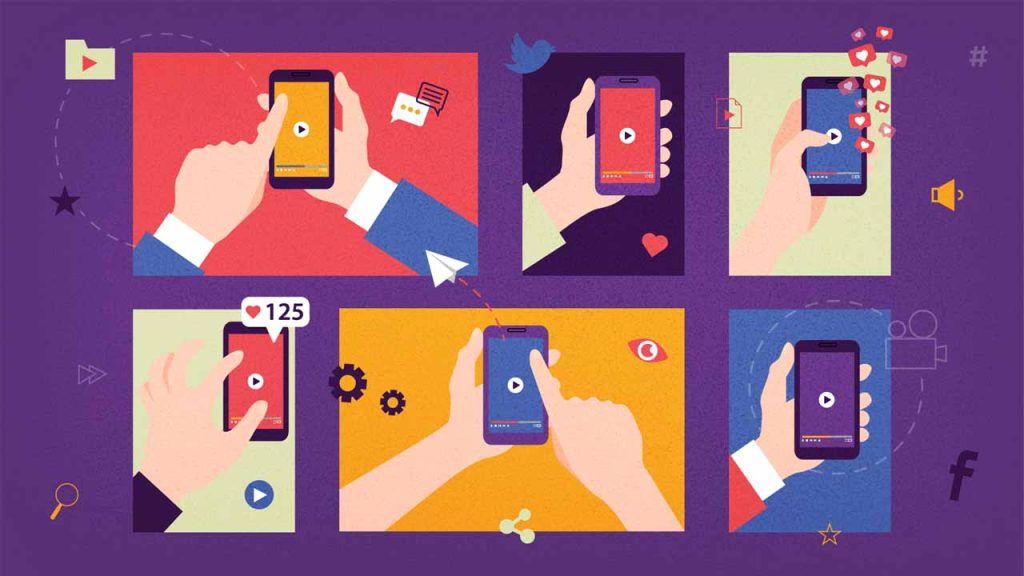
There are cases when using animation advertising is the best way to deliver the message. Here are best cases to use animation advertising –
- Animation advertising is extremely effective on digital platforms such as websites, social media, and video-sharing platforms. These platforms offer a lively and engaging environment in which animated content can capture attention and stand out among static images and text.
- Animation advertising is especially effective for brand awareness campaigns. Its eye-catching nature and imaginative storytelling abilities can aid in the creation of a memorable brand image and the effective communication of key brand messages.
- Animation is an excellent choice for explainer videos, which need to simplify and visually demonstrate complex ideas, products, or processes. Abstract concepts can be made more understandable and engaging through animation, allowing viewers to grasp the information more easily.
- Children’s content, such as animated shows, movies, and educational materials, makes extensive use of animation. Because of the colorful and lively nature of animation, it is an effective medium for learning or recreational uses.
Again, there are scenarios when using animation advertising may not be as effective as others. It is not because of the way of delivering the message, it depends on what we are delivering.
- Animation advertising may not be appropriate for serious or sensitive topics that require a more solemn or compassionate approach. Live action or other forms of visual interaction may be more appropriate in such cases. Although you can raise awareness about serious topics like poverty, water pollution, global warming, and deforestation, using animation as a medium to advertise any movement or company that is related to such issues is not a good idea. Because, although people are aware of these things, it takes some serious and reliable visual form that might convert that awareness into action.
- Animation may also not be the best option for advertising professional services that require trust and credibility. Animation may not convey the desired level of professionalism in certain industries, such as finance, law, or healthcare, where a serious and authoritative tone is required. Yes, you can disagree with this and say there are leading donation firms, banks, NGOs, and organizations in the world, who have been using animated videos on their website. But, if you look closely, those videos are explainer videos that help to understand easily how those businesses are running their operation. But when it comes to credibility and authenticity, always use the real and existing format of proof.
- While animation can appeal to people of all ages, it may be less effective in reaching older people who prefer more conventional or realistic forms of advertising. Understanding the target audience’s preferences and behaviors is critical in determining the suitability of animation.
- When advertising space or attention span is limited, such as with billboards or brief ad placements, the animation may not have enough time to engage viewers. In such cases, simpler and more concise messaging may be more effective.
Conclusion
Undoubtedly, animation has proven to be the most effective advertising medium of this era. Though there are some challenges, advertisers prefer animated videos over real footage in many cases to promote their products and services. As animation videos are versatile, cost-effective, and highly engaging, its popularity is growing day by day, this way, it can be said confidently that animation is going to be the future of advertising.


